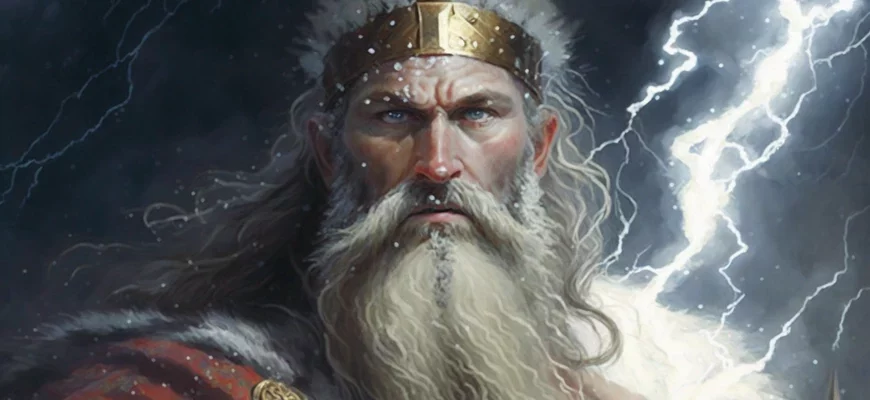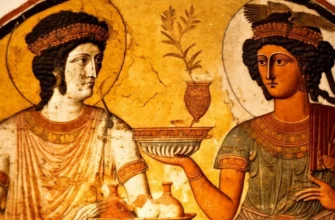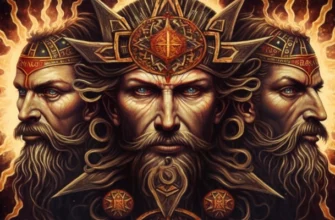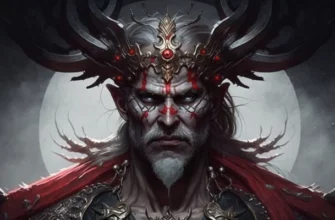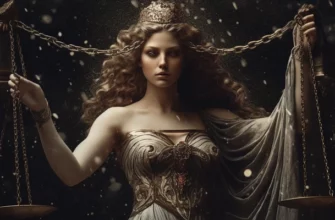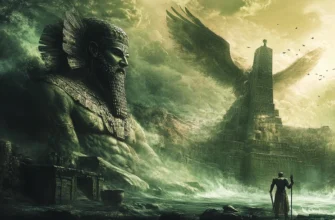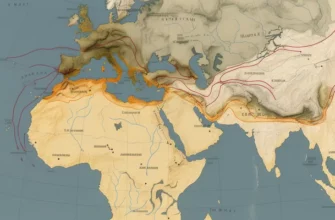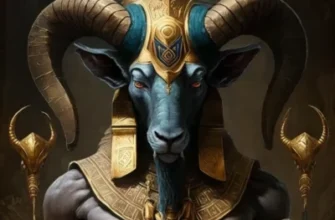The Slavic god Perun is one of the most famous gods in Slavic mythology. As the god of thunder and lightning, he was associated with powerful natural phenomena and protected against bad weather. Ideas about Perun varied and depended on the cultural and geographical characteristics of the Slavic peoples. His cult consisted of rituals associated with natural phenomena and religious celebrations. Today, the character of Perun can be found in literature, cinema, and other media, which testifies to the significance of his legacy in contemporary culture.
Mythological context
The mythological context of the god Perun is based on Slavic mythology. He was associated with powerful natural phenomena such as thunder and lightning and was considered a protector against bad weather. His image may differ in different cultures of the Slavic peoples, but at the heart of his cult is the belief in the powerful force of nature and the need for protection from its adverse manifestations. The god Perun was of great importance to the Slavic peoples and became one of the most famous characters in their mythology.
Origin and history
The origin and history of the god Perun have their roots in the pre-Christian era of Slavic history. His name comes from the Slavic word “perun,” which means thunder. In different cultures of the Slavic peoples, he had different attributes and symbols, but at the heart of his image lay a belief in the powerful force of nature and the need for protection from its adverse manifestations. His cult was widespread among the Slavic peoples, in particular among Ukrainians, Belarusians, Russians, Serbs, and others. At various intervals throughout Slavic history, Perun was proclaimed the chief god of the pantheon or was placed in second place, according to information preserved in literature and other sources.
Attributes and symbolism
The god Perun had his own attributes and symbolism, which depended on the different cultures of the Slavic peoples. In most cases, he was depicted with weapons, in particular a hammer or spear, symbolizing his power over thunder and lightning. He could also have a symbolic sign, usually depicted in the form of a wheel or a spinning wheel. In Ukrainian culture, Perun was depicted as a tall old man with a silver mustache and beard, holding a hammer in his hand, which he used to send thunder. In Belarusian culture, Perun was depicted as a young man with a beard and weapons, in particular a spear or sword. In Russian culture, he was depicted as a man with an open chest sign depicting lightning.
Religious cult
The god Perun is one of the most important gods in the pantheon of Slavic mythology. This god is responsible for storms, thunder, and lightning. His name comes from the Slavic word “perun” (thunder).
In Slavic religion, Perun was often depicted as a man with a white beard holding lightning in his hand. In many cultures, he was also associated with the oak tree, which was considered a sacred tree symbolizing his strength and stability.
In the religious cult of the god Perun, it was believed that he could protect against evil spirits and bring rain, which was necessary for the fertility of the land. People often prayed to him for protection from natural disasters and for success in battles.
Nowadays, the cult of Perun is experiencing a revival in various forms of neo-paganism and folklore.
Sacred places and rituals
In the Slavic religion, the god Perun was associated with sacred places and rituals. One of the most important places was the top of a mountain or mountain peak, where there was usually a shrine dedicated to Perun. People often gathered in these places to worship the god Perun and address him with prayers and requests.
One of the rituals associated with the god Perun was known as the “circle of Perun.” It was a ritual during which people stood in a circle, holding hands, and sang songs in honor of Perun. Another ritual associated with this god was called “babi’s summer,” in which people lit a fire to greet the god Perun and address their requests to him.
Sacrificial rituals were also common, in which people offered Perun various gifts, such as honey, bread, meat, and other foods. These rituals were usually performed outdoors, near the shrine of Perun.
In modern times, neo-pagan and folklore groups that are reviving the Slavic cult perform various rituals and ceremonies associated with the god Perun.
Representation in modern culture
In modern culture, the god Perun and Slavic mythology in general are quite popular topics. There are many books, films, games, and other works that use the mythology of Perun and other gods of Slavic mythology as the basis for their stories and characters.
Also, in some countries where Slavic culture existed, festivals and rituals associated with the god Perun and other deities are held. For example, in Russia and Ukraine, there are festivals called “Perun’s Firefly” and “Ivan Kupala,” during which rituals associated with the gods and symbols of Slavic mythology are performed.
In addition, various products featuring images of Perun and other gods of Slavic mythology have appeared in modern culture, such as T-shirts, jewelry, tableware, and more. Such items are usually used as a way to express interest in and respect for ancient Slavic traditions.
In general, interest in Slavic mythology and the god Perun can be explained by the desire to find one’s roots and return to ancient traditions that are still important to many people.
Conclusions
The significance of the god Perun in Slavic mythology was enormous. He was the god of thunder, lightning, and heavenly power who protected people from danger. Belief in Perun was an important part of the culture and life of the Slavic peoples, and his name has remained in Ukrainian, Belarusian, Russian, and other Slavic languages.
In modern culture, interest in Perun and Slavic mythology in general remains. He is a symbol of ancient traditions and culture that are important to many people. The image of Perun appears in various works that use mythology as the basis for their stories and characters.
The legacy of the god Perun lies in the fact that his name and image remain in our culture, as well as in other Slavic countries. He is a testament to how important beliefs and mythology were to the Slavic peoples and the role they played in shaping their culture and identity. Therefore, Perun and other gods of Slavic mythology remain an important element of cultural heritage and inspire further study and research.
